¶ Introduction
The VHF omnidirectional radio range (VOR) is an omnidirectional (360° of azimuth) range station which operates in the very high frequency (VHF) band of the radio spectrum between 108 to 118MHz, sharing the band from 108 to 112MHz with the localizer component of the Instrument Landing Systems (ILS).
The VOR is the basic short-range aid used to provide navigation guidance along airways, air traffic services (ATS) routes, intermediate and final approach tracks, and specified tracks.
¶ Bearing information
The VHF radio signal includes the station's Morse code identifier and electromagnetic signals that allows the airborne receiving equipment to calculate the magnetic bearing from the station to the aircraft.
This magnetic bearing from the station to the aircraft is called the "radial". A radial starts at the beacon and continues until the reception is granted.
Bearing information may be used by aircraft to fly toward or away from the VOR station at any azimuth selected by the pilot or to know the relative position of the aircraft from the VOR station.
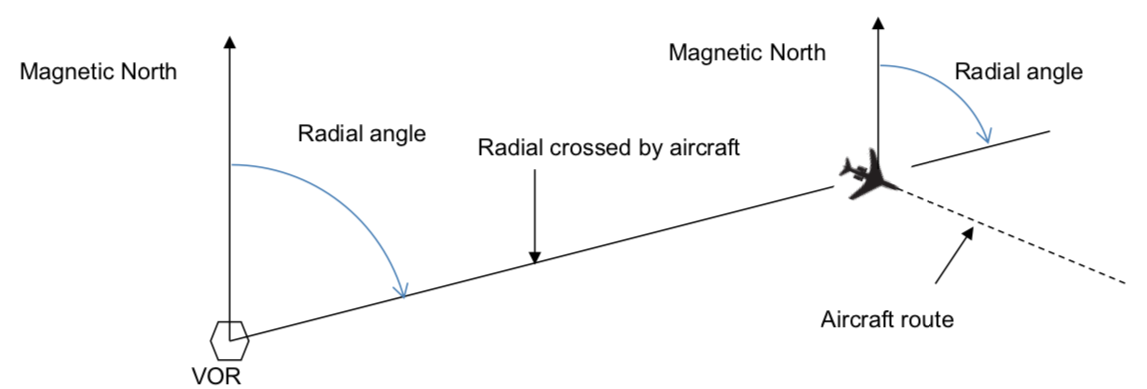
The 180° ambiguity in this indication is resolved by the provision of a "to/from" of the VOR indicator in the aircraft avionics.
The VOR may also be provided with a voice channel for ground-to-air communication.
¶ Ground equipment: VOR
VORs are exploited over the Very High Frequency (VHF) band from 108 to 117.95 MHz with channels spaced of 50 or 100 kHz (50 kHz for dense zones, 100 kHz elsewhere).
The first 4 MHz frequency range, from 108.0 to 111.95 MHz, is shared with the ILS band.
Two types of VOR beacons are used:
- Terminal VOR (T-VOR): they are used in the terminal area of airports and cover a relatively small geographic area protected from interference by other stations on the same frequency. T-VOR output power is 50 W which allows covering a region from 1000 ft AGL up to and including 12000 ft AGL at radial distances out to 25 NM. The allocated band ranges from 108 to 111.850 MHz with the 100 kHz digit being always even (example: 108.25MHz, 109 MHz)
- En route VOR: they are used as route fixes within high or low airspace. Their output power is 200 W which provides a range up to 200 NM. The allocated band ranges from 112 to 117.950 MHz
Since it is normally used within approximately 130 NM of the station, the VOR is considered a short-range navigation aid.
Distance measuring equipment (DME) is a useful adjunct to, and is normally collocated with a VOR. In such case the VOR is referred to as a VOR/DME.
Sometimes a TACAN is collocated with a VOR; the VOR is referred to as VORTAC. TACAN is tactical air navigation and it is a military equipment that provides both azimuth and distance components by equipment operating in the UHF band. The distance measuring equipment of TACAN is compatible with other DME equipment.
¶ VOR performance limitations
VORs are used at times beyond 130 NM; however, the accuracy of navigation guidance derived from it decreases with the increased range.
VOR is subject to line-of-sight limitations. This means that its signals can only be received at increasingly higher altitudes as the distance of the aircraft from the station increases. The usable range of a VOR is also proportional to its power (the greater the power output, the greater the effective range is).
The equation of line-of-sight distance (without obstacles):

Example: for 3000ft, D= 65NM; for 9000ft, D=115NM.
When overflying the VOR, aircraft will enter a "cone" of signal "softness" but its horizontal dimension at any level is relatively small and has normally no noticeable effect on navigation.
Nevertheless, the VOR receiver becomes incapable of radial detection inside this cone. The VOR receiver will display the OFF flag and the radial indicator should be at maximum deviation.
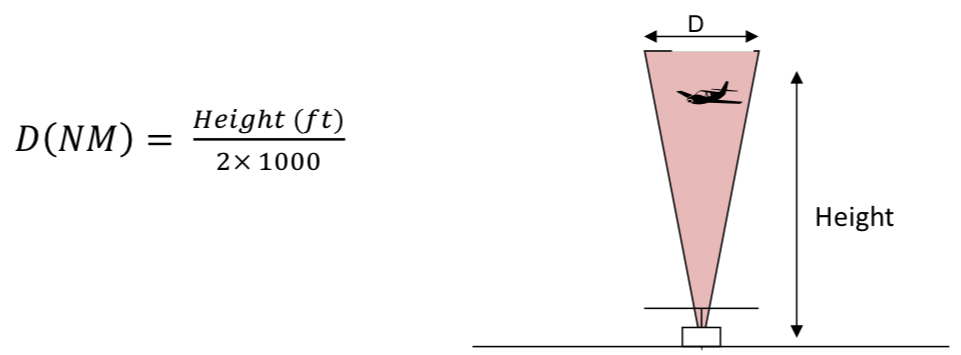
Example:
- at 20000ft, D = 20/2 = 10 NM
- at 4000ft, D = 4/2 = 2NM
¶ VOR accuracy and interference
The radial line is read in degrees of azimuth from the magnetic North and is technically accurate to within ±2°. The over-all system accuracy is ±5°.
The VORs are also subject to co-channel or adjacent frequency interference problems with other VOR or ILS.
¶ Principles of VOR signals
The VOR beacon simultaneously transmits two signals:
- A constant omnidirectional signal (30Hz) called the reference phase
- A directional signal (30Hz) which rotates through 360°, during a 0.03 second system cycle (30Hz), and consistently varies in phase through each rotation.
The two signals are only exactly in phase once during each rotation -- when the directional signal is aligned to the magnetic north.
The receiver onboard the aircraft will measure the phase between both signals which is independent of the aircraft heading.
¶ VOR on charts
The representation of the VOR on charts can take one of these symbols.
¶ VOR only symbol
These are some examples of the VOR symbol on charts:
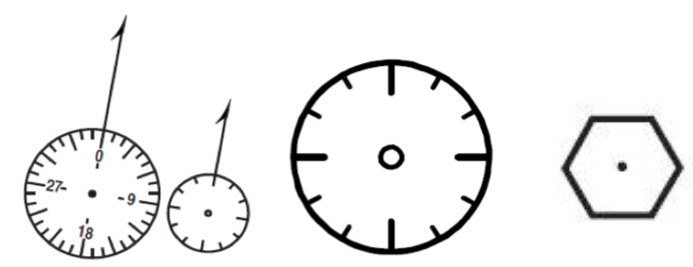
The representation using a circle is the Jeppesen representation. The representation using a hexagon can be found on some local charts published by national organizations. Some representations can mix the two symbols.
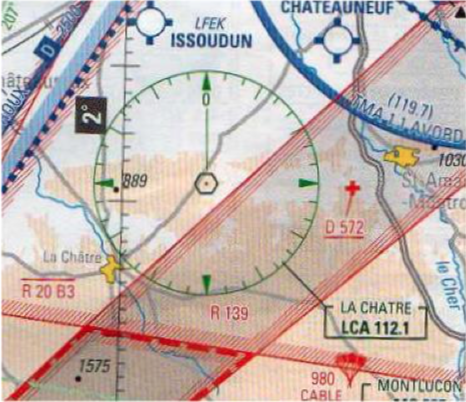
Example: VOR LCA 112.1MHz "LA CHATRE"
¶ VOR/DME symbol
These are some examples of the VOR/DME symbol on charts:

¶ VORTAC symbol
These are some examples of the VORTAC symbol on charts:
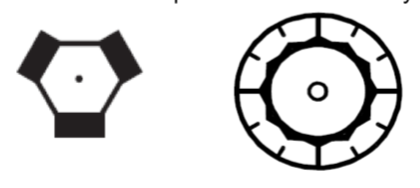
Below, these are the TACAN only symbols. Do not confuse them with
others!

- None
- VID 150259 - Creation
- VID 450012 - Update
- VID 496402 - Wiki.js integration